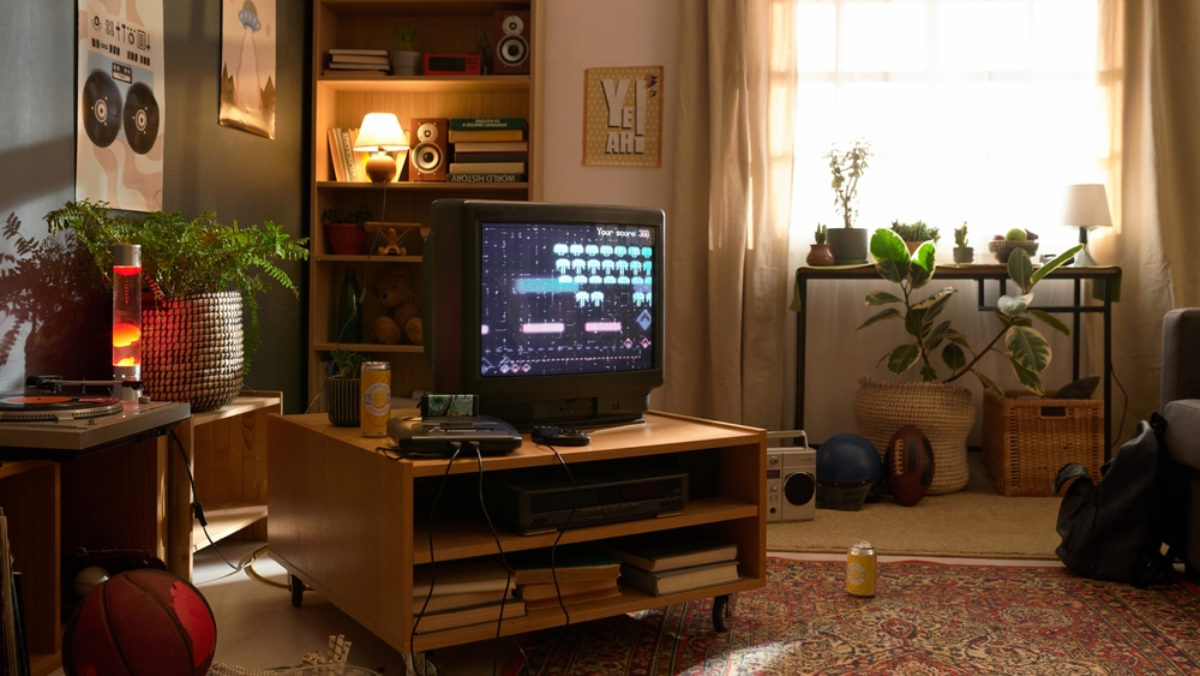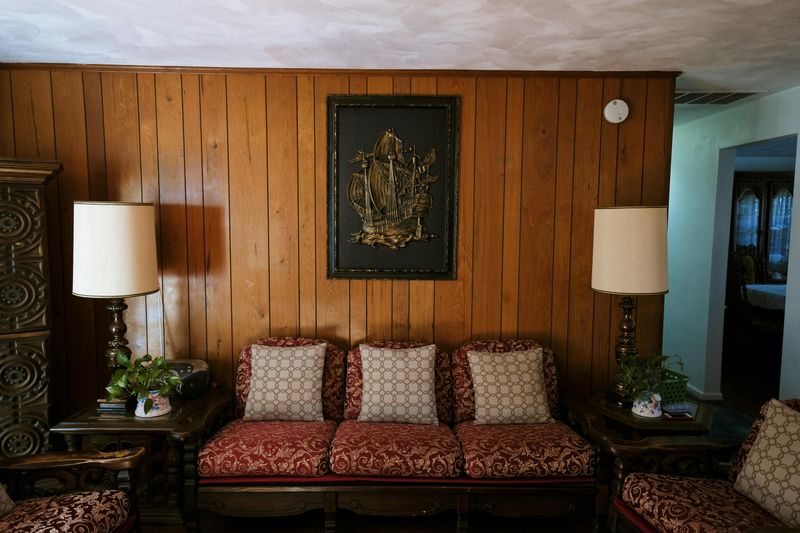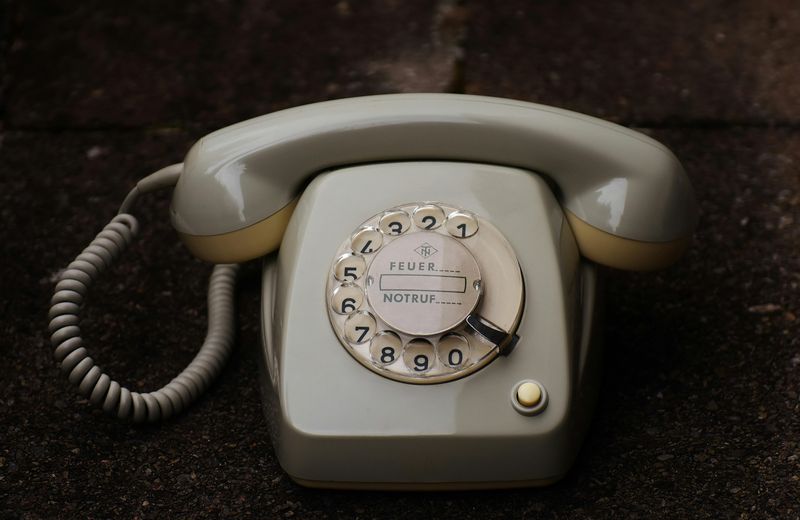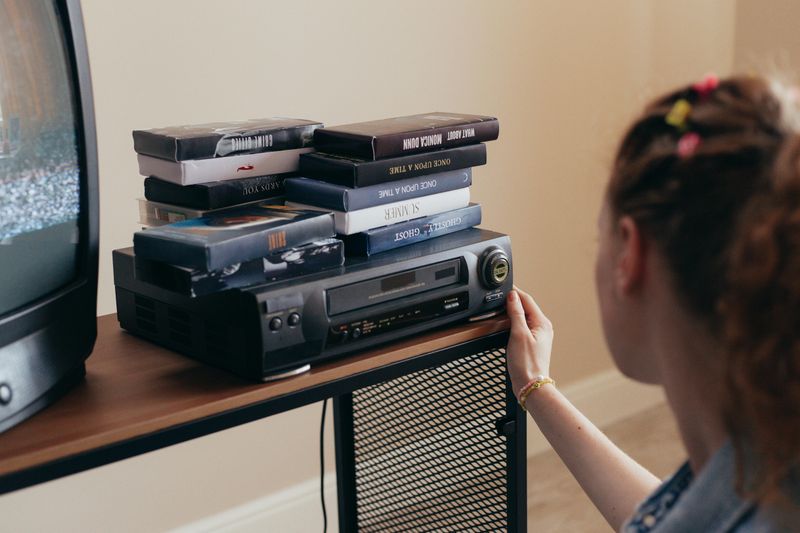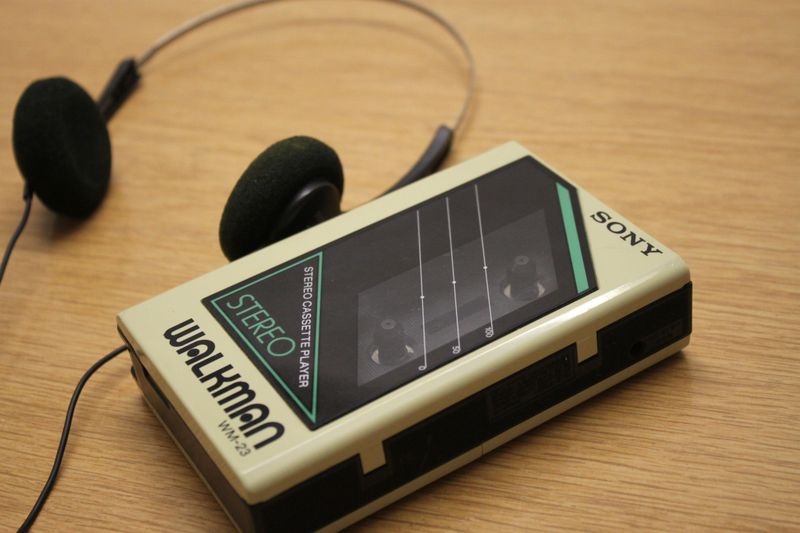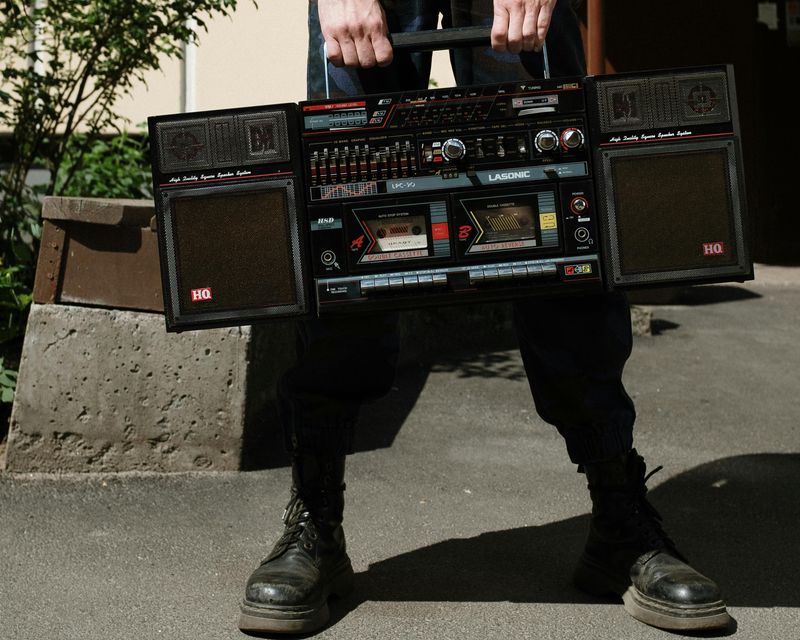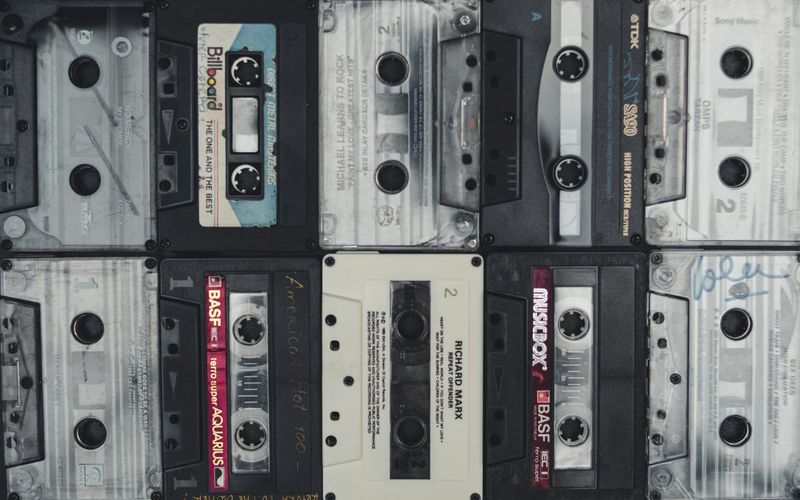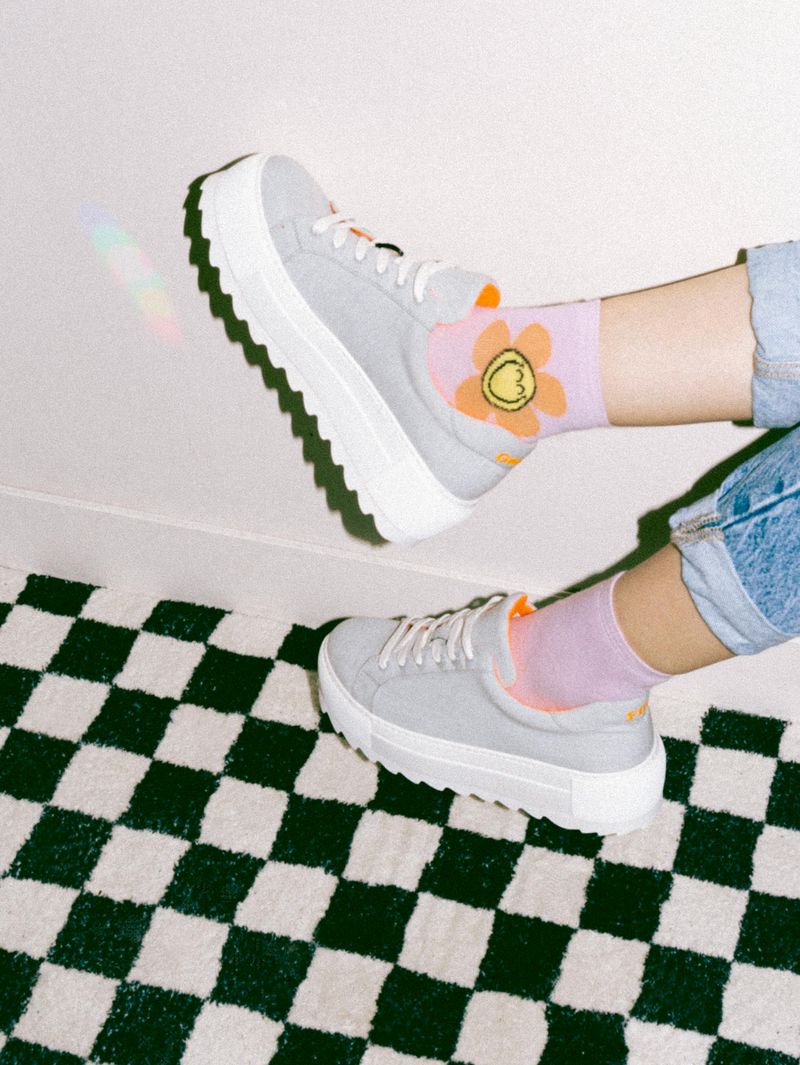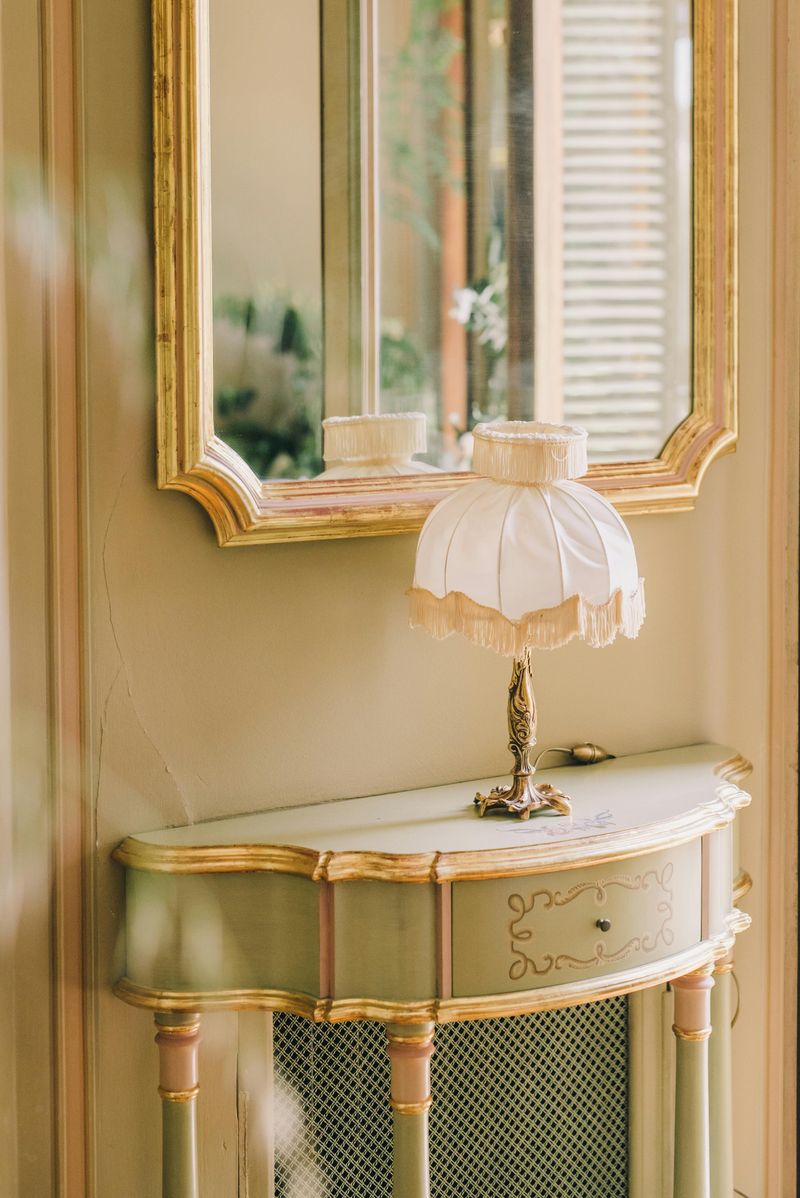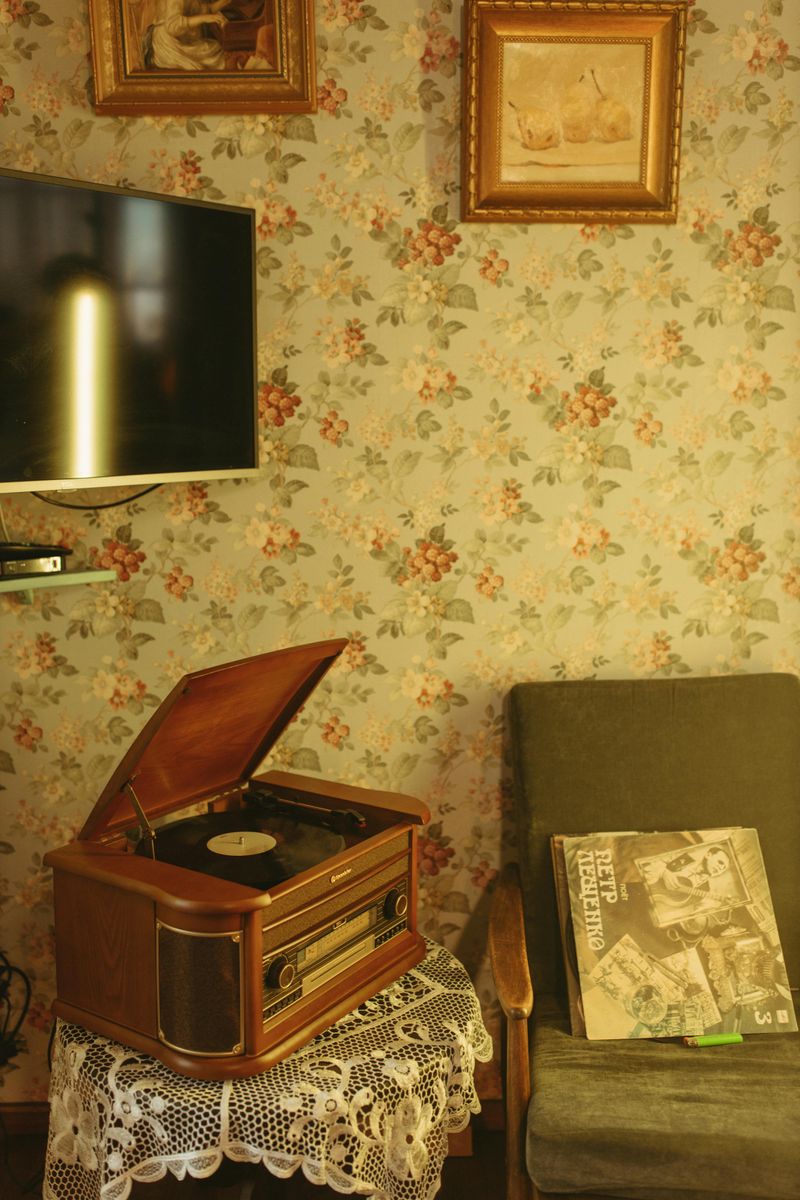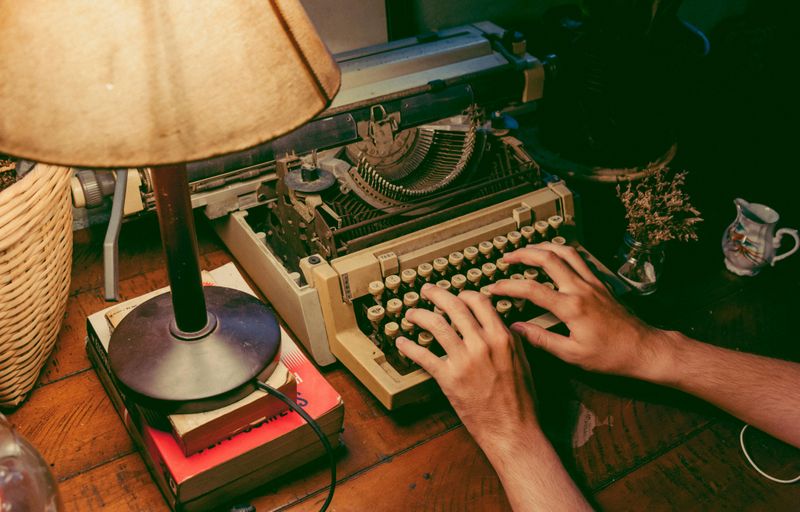Remember when everyone’s living room looked like it belonged in a catalog from the same decade? The 1980s brought a unique style that filled homes across America with unforgettable decor and technology. From wood paneling that covered entire walls to cassette tapes stacked beside bulky entertainment centers, these items defined an era and created memories that still make us smile today.
1. Wood-Paneling Walls
Dark brown boards covered living rooms and basements in nearly every neighborhood during this decade. Families thought wood paneling made spaces feel cozy and sophisticated, even though it actually made rooms darker.
Installing these panels was cheap, which helped them spread like wildfire through suburban homes. Today, people either love the nostalgic vibe or can’t wait to tear it down. Back then, though, wood paneling was simply what modern homes were supposed to have.
2. Landline Telephone with a Curly Cord
Stretchy coiled cords connected the handset to the phone base, and they could reach surprisingly far when fully extended. Teenagers would pull the phone into their bedrooms or around corners to have private conversations away from family members.
Some families had phones in multiple colors to match their kitchen or living room decor.
When someone called, everyone in the house could hear the ringing bell echoing through the hallways. There was no caller ID, so answering always brought a small element of surprise about who was on the other end.
3. VHS Tapes and VCR Player
Recording your favorite shows on VHS felt like magic when it first became affordable for regular families. You could finally watch movies at home without waiting for them to appear on television networks.
Video rental stores popped up on every corner, and Friday nights meant picking out tapes for the weekend. The VCR’s blinking 12:00 clock became a running joke because nobody could figure out how to set it properly.
Rewinding tapes before returning them was basic courtesy, and some stores even charged fees if you forgot.
4. Walkman or Portable Cassette Player
Sony revolutionized personal music when they introduced a device that let you take your tunes anywhere. Suddenly, kids could listen to their own music while doing chores, walking to school, or lounging in their rooms.
The foam headphones weren’t exactly comfortable, but they were a small price to pay for musical freedom.
You needed to flip the cassette tape halfway through to hear the other side, which interrupted your listening flow. Batteries drained quickly, so smart users kept extras in their backpacks.
5. Boom Box Speakers with Cassette Deck
These portable stereos were anything but subtle, with their oversized speakers and chrome detailing that screamed for attention. People carried them on their shoulders through parks and streets, sharing their music with everyone nearby whether they wanted to hear it or not.
The dual cassette decks let you make copies of your favorite tapes for friends. Radio antennas extended several feet to catch better signals for recording songs off the air.
Batteries lasted maybe an hour if you were lucky, so most people used them plugged into wall outlets.
6. Mixtapes Made on Blank Cassette Tapes
Creating the perfect mixtape was an art form that required patience, planning, and perfect timing. You’d sit by the radio with your finger hovering over the record button, waiting for your favorite song to start.
Writing song titles on the tiny paper insert with your best handwriting showed you really cared about the recipient. Each tape was a personal gift that took hours to create, making them incredibly meaningful to both maker and receiver.
These homemade compilations captured moments, emotions, and relationships in a way playlists never quite replicated.
7. Checkered or Pastel Carpet
Bold geometric patterns and soft pastel shades covered floors in bedrooms, bathrooms, and living spaces throughout the decade. Pink, mint green, and baby blue carpets were especially popular, often clashing wonderfully with the wood paneling on the walls.
Checkered patterns in contrasting colors made rooms feel busy and energetic. These carpets showed every stain and required constant vacuuming to maintain their bright appearance.
Families took pride in their colorful floor coverings, even if they make us cringe a little today when we see old photos.
8. Brass or Gold-Tone Furniture Accents
Shiny metallic finishes appeared on everything from table lamps to picture frames, giving homes a glamorous touch that felt expensive. The warm golden glow of brass complemented the earth tones popular in ’80s decorating schemes.
Polishing these accents became a regular chore since fingerprints and tarnish showed up quickly on the reflective surfaces. Coffee tables with brass legs, gold-rimmed mirrors, and metallic candle holders filled living rooms and dining areas.
The more brass you had, the fancier your home appeared to visitors. This trend eventually fell out of favor, but it perfectly captured the decade’s love of bold, eye-catching style.
9. Wallpaper with Bold Patterns or Florals
Walls exploded with oversized flowers, geometric shapes, and busy prints that covered every inch of available space. Matching the pattern at the seams required skill, and many amateur installers ended up with slightly misaligned designs that drove them crazy.
Kitchens often featured fruit or vegetable patterns, while bathrooms got seashells or nautical themes. Each room could have completely different patterns, creating a visual journey as you walked through the house.
Removing old wallpaper years later became a nightmare project that involved steamers, scrapers, and lots of elbow grease.
10. Electric Typewriter in the Home Office
Before computers became affordable, electric typewriters represented cutting-edge home office technology. The satisfying click-clack of keys and the ding of the carriage return created a productive soundtrack for letter writing and report typing.
Students typed school papers on these machines, carefully proofreading every word since editing meant retyping entire pages.
The hum of the motor and the smell of ribbon ink filled home offices and kitchen tables across the country. Owning one meant you were serious about your work and correspondence.
